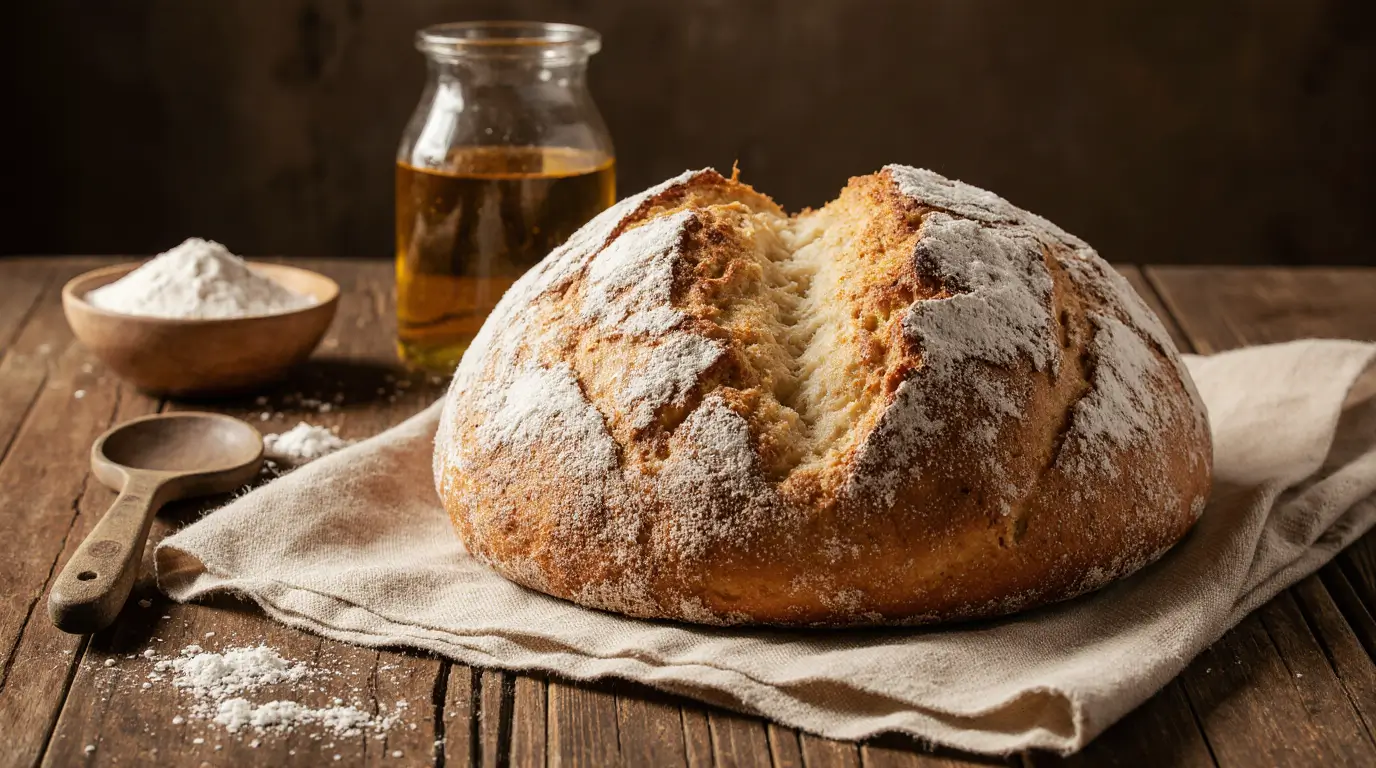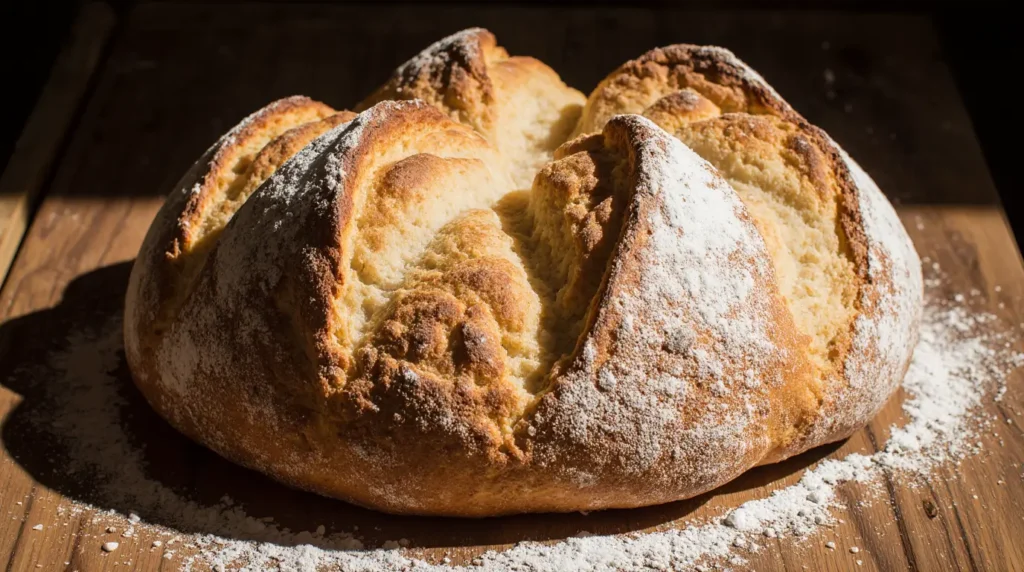Italian bread recipes : Find the art of authentic rustic Italian bread

If you ever tear in a warm, crusty asphumes of rustic Italian bread, then you know it’s not just food – this is an experience. In this guide we take you to a delicious journey through traditional Italian bread recipes that bring the heat from the Italian cuisine home. Whether you are a home baker or start now, this article offers simple, rewarding and authentic food – including the timeless rustic Italian bread
- Why Italian Bread Deserves a Spot in Your Baking Routine
- Key Ingredients for Authentic Italian Bread
- Recommended Tools for Rustic Italian Bread Success
- Rustic Italian Bread: Traditional Recipe
- Tips for a Perfect Crust Every Time
- Variations of Classic Italian Bread Recipes
- Pairing Italian Breads with Meals
- Storage & Freezing Tips
- Frequently Asked Questions (FAQ)
Why Italian bread is entitled to a place in your bakery routine
Italian bread is more than livelihoods – it’s culture. The techniques have been carried through generations and lies in quality materials and time -respectable methods. Unlike processed Rotis, Italian bread is:
Naturally fermented or slowly up
Some made with simple materials
Cook with character: crusty outward, soft inside
The most important thing is that the added beautiful with soup, cheese boards, pasta dishes or a simple drizzle olive oil.
Key Ingredients for Authentic Italian Bread
| Ingredient | Description |
| Bread flour | High-protein flour for elasticity and chewy texture |
| Active dry yeast | Helps dough rise slowly and develop flavor |
| Water | Lukewarm; activates the yeast and hydrates the flour |
| Olive oil | Optional, but adds richness and moisture |
| Salt | Enhances flavor and balances the yeast activity |
| Sugar (optional) | Small amount to feed the yeast and slightly enhance browning |
Recommended Tools for Rustic Italian Bread Success
| Tool | Why You Need It |
| Large mixing bowl | To combine and knead dough effectively |
| Kitchen scale | For precise flour-to-water ratios |
| Bench scraper | Helpful in shaping sticky dough |
| Dutch oven or baking stone | Ensures high heat retention for a crisp crust |
| Sharp bread lame | For scoring before baking—helps bread expand in the oven |

Rustic Italian bread: Traditional recipe
Let’s start with the cornerstone of all Italian bread recipes: Rustic Italian bread. This version provides a golden crust, open piece and dark taste – the perfect or needle in olive oil to Bruceechheta.
Ingredients
- 500g bread flour
- 350ml lukewarm water
- 7g active dry yeast
- 10g salt
- 1 tbsp olive oil (optional)
- Instructions
Step 1: Enable yeast
In a bowl, solve the yeast in lukewarm water. Let it sit for 5-10 minutes.
Step 2: Mix flour
Add flour and salt to the yeast mixture. Mix using the hands or wooden spoon until it is in the form of coarse flour.
Step 3: Knead and relax
Knead the dough on the surface of the dough for 8-10 minutes until it is smooth and elastic. Transfer, cover, cover and allow it to grow for 1.5 to 2 hours, or until it works.
Step 4: Size and second increase
Shape the dough gently, shape it into a round or oval pav, and place it on a parched baking tray or a flour insulation basket. Cover and leave it for another 45-60 minutes.
Step 5: Preheat and score
Preheat the oven at 245 ° C with a baking stone or Dutch oven. If a Dutch oven is used, keep the dough carefully. Score the top using a bread limp.
Step 6: Bake
Fry for 25-30 minutes, then expose 10-15 minutes until the golden and crusty are deeply golden and crusty.
Step 7: Cool
Completely cool on a thread rack before slicing.
Tips for a Perfect Crust Every Time
Achieving that golden, crackly crust typical of rustic Italian bread isn’t magic—it’s science and technique. Follow these expert tips to ensure your homemade loaves look and taste like they came straight out of an Italian forno.
✅Use steam over the oven
The steam slows the earth’s crust during the first few minutes of cooking, providing better oven springs and a sharp exterior.
How to do it:
- Preheat a metal tray on the rack below.
- After placing the bread in the oven, add a cup of warm water to the tray and quickly close the door.
- Or use a Dutch oven to trap moisture naturally.
✅ Bake on high heat
Italian bread requires early heat to blast to develop a crusty shell.
Preheat your oven at 245 ° C for at least 30 minutes before.
✅ Score the dough correctly
The appropriate score allows the steam to survive and give the bread’s iconic, rustic appearance.
Tip: Use a sharp bread limp or razor at 45 ° angle to create controlled expansion.
✅ Avoid overtaking
If your dough is very airy before baking, the crust may fall or be too thin.
Perform “Poke Test”: A lightly indenturated finger brand should slowly run back.
✅ Let the bread cool completely
Hot bread continues to cook from the inside. Very soon emits steam and soften the crust.
Wait at least 1 hour before slicing for optimal texture.
Diversity of classic Italian brothers
When you mastered the original rustic Italian bread, try these regional variations:
1. Siibatta
The perfect for sandwich is known for its open pieces and chouby texture.
2. Pen Tuscano
Tuscany Salt -free bread; Ideal with salt meat and cheese.
3. Focaisia
Olive oil, flat bread tops with herbs, olives or tomatoes.
4. Grisini
Crunchy Breadstics should be one for antipasto plates.
Pairing Italian Breads with Meals
| Bread Type | Best Paired With |
| Rustic Loaf | Minestrone soup, olive oil & balsamic |
| Ciabatta | Panini, cured meats |
| Focaccia | Tomato salad, grilled vegetables |
| Pane Toscano | Prosciutto, pecorino cheese |
| Grissini | Aperitivo, dips like hummus or tapenade |
Storage & Freezing Tips
- Store at room temperature in a paper bag or bread box for 2-3 days.
- Cut and freeze for 2 months. Heat in the oven for the best texture.
Want to make bakery-quality bread at home?
👉 Click here to see our top-rated kitchen tools
Frequently Asked Questions (FAQ)
What is the difference between rustic Italian bread and French bread?
Rustic Italian bread often uses olive oil, is dense and has a thick layer. French bread usually contains a thin, sharp crust and not added fat.
Can I use all the plague flour instead of bread flour?
Yes, but bread can be reduced a bit. Bread flour gives the best results for rustic rotis.
Do I need a Dutch oven to bake Italian bread?
Not strictly, but it helps to repeat the conditions in the back style with high heat and steam. A baking stone or heavy board also works.
Is the rustic Italian bread healthy?
It is made with natural ingredients and no protector. Whole grain versions increase fiber content and health benefits.
Mastery in Italian bread – especially timeless rustic Italian bread – is more than a culinary skill; It is a way to get in touch with centuries -old traditions contained in simplicity, taste and crafts. With the right materials, equipment and techniques, no one can bring the aroma and the texture to an authentic Italian bakery into their kitchen. Whether you cook for family dinner, festive opportunities or your personal satisfaction, these bread provides comfort and character in all slices. Squeeze the process, enjoy the prices and don’t forget: The secret of big bread is patience, passion,
and a perfectly baked crust.
Ready to bake like a pro?
Explore our curated collection of the best flours, mixers, baking stones, and more.
